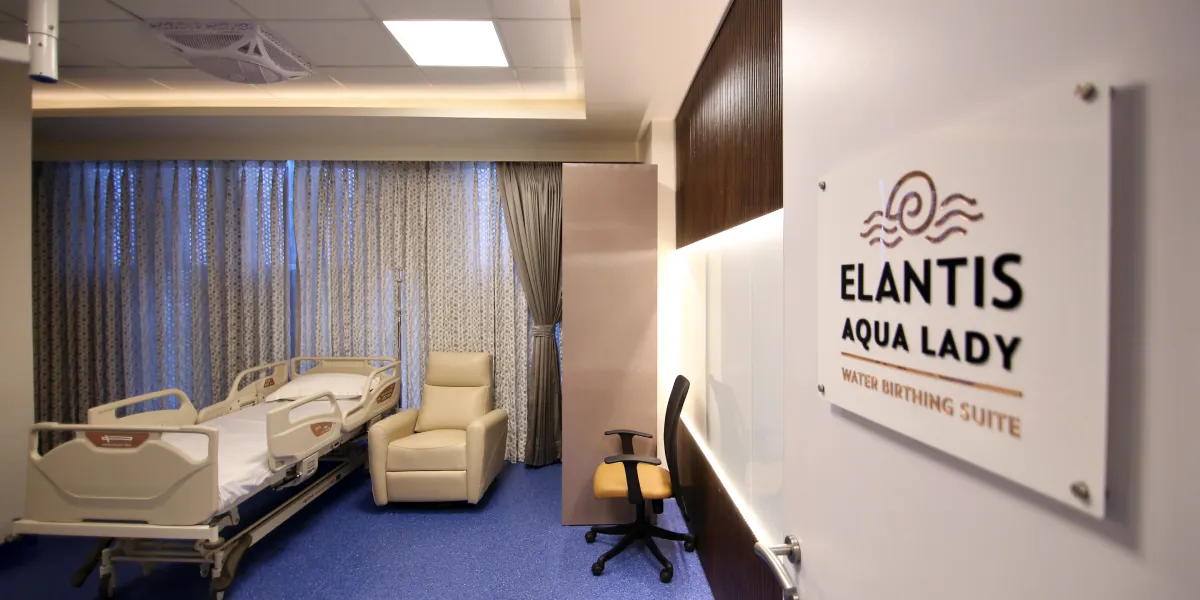


Water birthing is the most natural transition for the baby, as it is ensconced in amniotic fluid within the womb. Dating back 200 years in France, today it is a safe birthing option at ELANTIS, where the mother rests in warm water during labour and delivery, under the supervision of a qualified expert and nursing team.
Warm water relaxes and soothes tense nerves and muscles, calming anxiety, as a natural pain reliever by lowering your blood pressure levels, and helping the body release endorphins to reduce the severity of pain. Water buoyancy also gives the mother a sense of control on the body, allowing more flexibility to move freely. Finally warm water helps stretch the perineal region, reducing the risk of injury. The milder effects of gravity underwater allows the baby to move towards the birth canal, reducing the duration of labour. Even with a cesarean section, water immersion during labour can provide these benefits.
Water birthing is believed to offer several potential benefits, including pain relief, relaxation, reduced need for medical interventions such as epidurals or pain medication, shorter labor duration, and a gentler transition for the baby from the womb to the outside world.
Water birthing can take place at home, in a birthing center, or in a hospital setting, depending on the availability of facilities and the preferences of the mother-to-be. Each setting may have specific guidelines and requirements for water birthing.
For water birthing, a birthing tub or pool large enough for the mother to comfortably immerse herself in warm water is required. The tub should have suitable features for safety and hygiene, such as handles for support, a non-slip bottom, and a way to monitor the mother and baby’s vital signs.
The water temperature in the birthing tub should be monitored and maintained within a safe range (usually around body temperature or slightly warmer) throughout labor and delivery. This helps ensure the mother’s comfort and prevents overheating or chilling of the baby.
While water birthing is generally considered safe for low-risk pregnancies when conducted under appropriate conditions, there are potential risks to be aware of, such as infection, umbilical cord complications, and respiratory issues for the baby if born underwater. These risks should be discussed with your healthcare provider.
Water birthing may not be recommended for women with certain medical conditions, high-risk pregnancies, or complications that could increase the likelihood of complications during labor and delivery. It’s essential to discuss your individual circumstances with your healthcare provider to determine the safest birthing options for you and your baby.